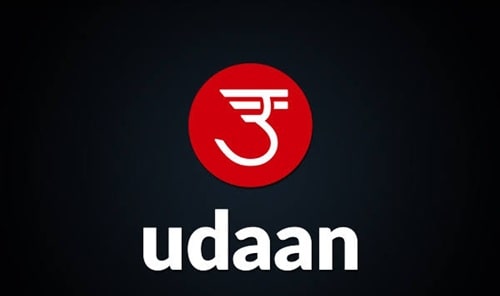Right now, Delhivery is quite literally among the most successful, famous, and preferred logistics companies in the country, and you’ll be shocked to know that it was just started in 2011. Just in 14 years, this company managed to cross the $1.1 billion mark in 2025, and that’s just mind-boggling growth right there. But it is not just the logistics or parcel handling that makes them the money; there are other income streams that they have built over the years. So, if you truly wanted to know about the Delhivery Business Model, or how Delhivery makes money, then just keep on reading.

| Company / Brand name | Delhivery Limited |
| Establishment year | 2011 |
| Headquarters | Gurugram (Gurgaon), Haryana, India |
| Founder / Owner | Sahil Barua, Mohit Tandon, Bhavesh Manglani, Suraj Saharan, Kapil Bharati |
| Industry | Logistics, 3PL, Freight, Warehousing, Supply-chain services |
| Net worth (market cap, snapshot) | ₹34,755 crore (market-cap snapshot around Oct 2025) |
| Total revenue (FY2025) | ₹9,372 crore ($1.1 billion) |
What Delhivery Does and Why Businesses Pay for It
Delhivery oversees the complete delivery cycle, the products being picked up from the seller’s warehouse and delivered to the buyer’s location, to name a few. Through the use of its trucks, planes, and automated sorting centers, the company is able to carry shipments to any part of India in a very minimal time required.
Delhivery is a preferred pick of businesses as it enables them to provide quick delivery, manage returns in a hassle-free manner, keep stock at a location near their customers, and expand their business without having to invest in transport vehicles or warehouses. These aren’t the only things, see, Delhivery has systems in place for its customers with cutting-edge tech solutions such as real-time tracking systems, route planning software, and an order integration feature, which altogether reduce the complexity of logistics.
How does Delhivery Make Money?
Delhivery’s income is not solely dependent on one service only. Nah! In actuality, the company makes money via several business sectors that span the whole process of logistics. Here:
- Express Parcel and Last-Mile Delivery: Merchants are the ones who pay Delhivery for each parcel that they pick up and deliver to the specified location. And you might already know it, the cost varies based on the weight, the distance, and the nature of the delivery, for instance, normal, next-day, same-day, or instant (less than 2 hours).
- Freight Services (PTL / FTL): Companies that transport sizable shipments in the form of cartons, pallets, or trucks of full capacity usually freight with Delhivery. In the case of part-truckload (PTL) operations, Delhivery merges the shipments of various clients to make the use of the truck and the profit margin more efficient.
- Warehousing and Fulfilment: Delhivery imposes storage fees on customers for the amount of goods stored in their warehouses, as well as for handling the orders of the store or the customer. This pays well too, like the services that are covered by the fees, which include the picking, packing, and dispatching of products.
- Reverse Logistics and Returns Handling: Delhivery gets money from retailers to pick up the products that have been sent back, to check them, and to manage exchanges or refunds. Though it might not seem like one, but it surely is another income stream for them.
- Value-Added Services and Surcharges: Additional services come with cash-on-delivery (COD) management, shipment insurance, fragile or oversized item handling, installation support, and festive-season surcharges, being the most common such services, which add extra income.
- Technology and Platform Solutions: Delhivery, besides transport, makes money from technology services like APIs, monitoring dashboards, and data tools that business customers incorporate into their systems.
- Cross-Border and International Services: In the case of sellers who export their products beyond India, the entire import procedure is taken care of by Delhivery. From the very start to the very end. Along with international shipping, the company also handles the delivery to the final destination of the foreign country, although it is calculated with an additional amount for these services.
- Enterprise Contracts and Volume Deals: Big companies usually enter into long-term agreements that have a minimum monthly shipment or volume-based discounts. Such transactions ensure that Delhivery will have a steady and foreseeable source of revenue.
Recent Developments That Affect Revenue
The company has increased its business through mergers and acquisitions with other logistics companies. By combining these businesses, it has been able to grow parcel volumes and also abandon contracts that were unprofitable for the company. As a result, it has been able to improve its profitability in part-load (PTL) operations.
Additionally, it has debuted speedy shipping alternatives such as on-the-spot local delivery and under two-hour services available in certain cities, thereby accessing new, valuable market segments. And that has become a big pump in the revenue from there on, and we’ll see the impact of that just in the near future.
Financial Overview
Delhivery has announced total combined income equivalent to roughly ₹7,929.43 crores for the time extending from the 1st of April 2023 to the 31st of March 2024 (FY 2023-24). The revenue is the money that was made from deliveries, transportation of goods, storage, and technology services.
Delhivery has progressively grown its revenue year after year, along with changing the focus of its business to more profitable, higher-margin lines, which offer more stability in terms of profit.



